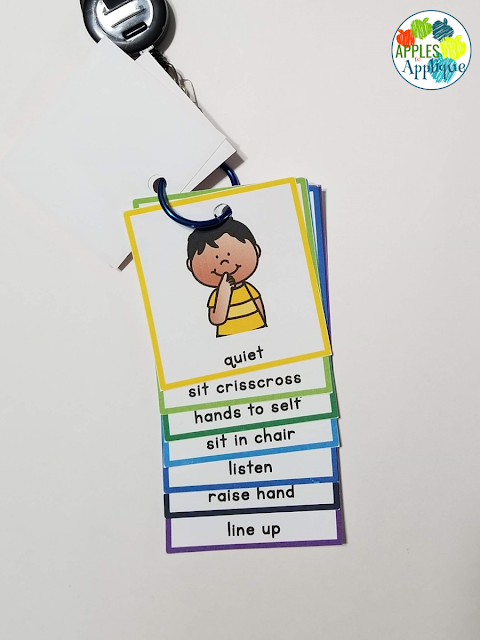I hear often about the importance of using visuals with students with special needs. It's true that visuals provide a good way to communicate with these kiddos, as some of them do better with processing an image than the spoken word. I like to take visuals one step further, and use them with all early childhood students. My classroom is made up of students with special needs, and those who are at risk, including a high number of ESOL students. I have found that all of them respond positively to visuals!
Visuals provide the advantage of actually showing students your expectation. I also love that they can be used to give a direction while you are still teaching. Often, in the middle of a lesson, I will hold up a visual to a student who is off-task, while not missing a beat with my instruction. This is why I LOVE the quick-reference design of these visuals in my Teachers Pay Teachers store!
Another powerful thing about visuals is that they lead to fewer power struggles and defiant behaviors. Students don't feel as challenged when presented with a visual as they do with a verbal command. They don't feel as much like they were called out in front of their peers; in fact, often times their classmates don't even notice the direction has been given, since the teacher is able to continue seamlessly with instruction. While this doesn't hold true 100% of the time, and of course some students will still choose to not listen, I have found that, by and large, a child who is calmly shown a visual to "sit" or "be quiet" will respond better to it than being told verbally to "sit" or "be quiet".
I attach these visuals to my lanyard so that they are always ready to go. When needed, I usually hold up the visual and give it a tap, then when the student complies I give a quick smile and a thumbs-up. We have an entire exchange without any words, and without them feeling embarrassed in front of their classmates. It's quick, easy, and effective.
If you have any experience with using visuals for behavior expectations in your classroom, I would love to hear about it! Drop me a comment below!




No comments:
Post a Comment